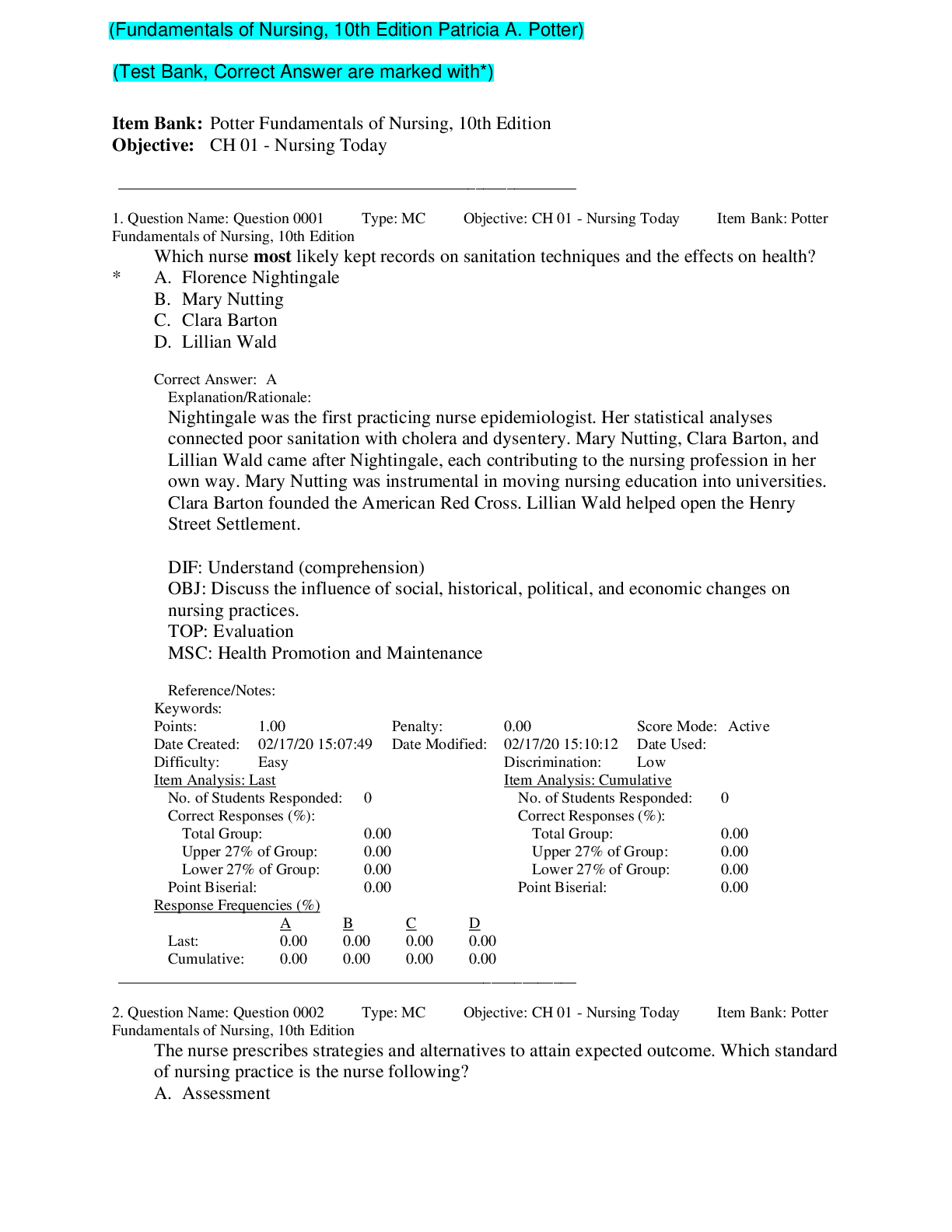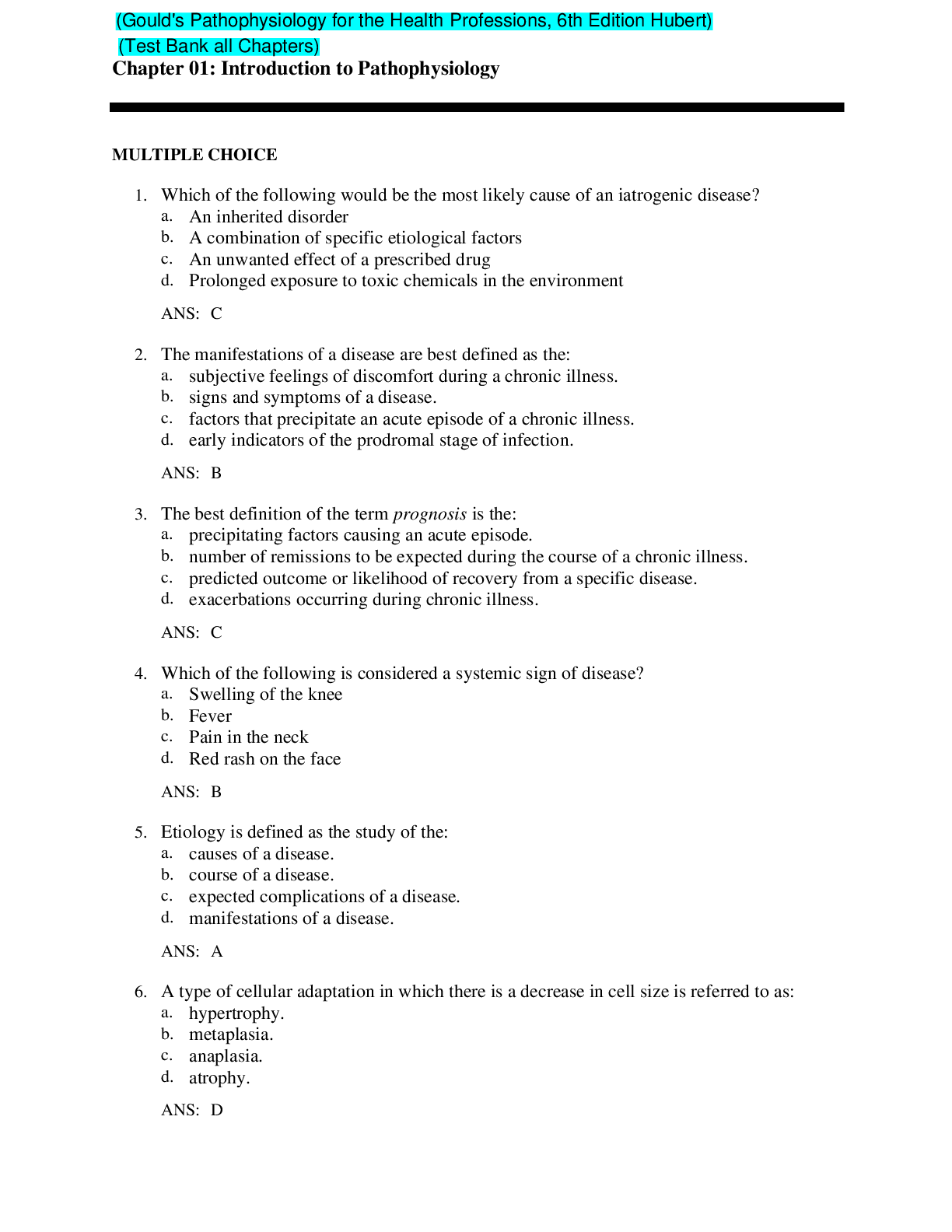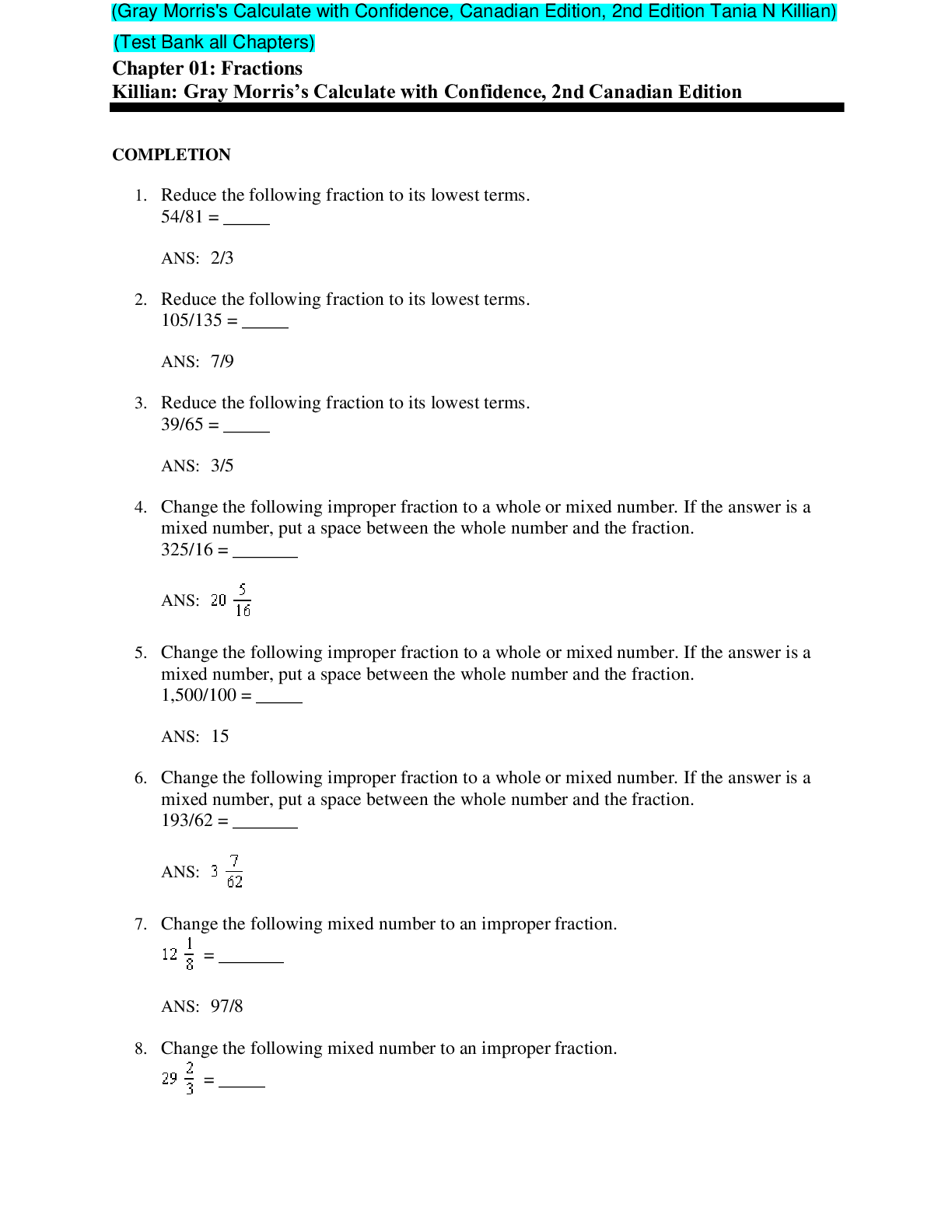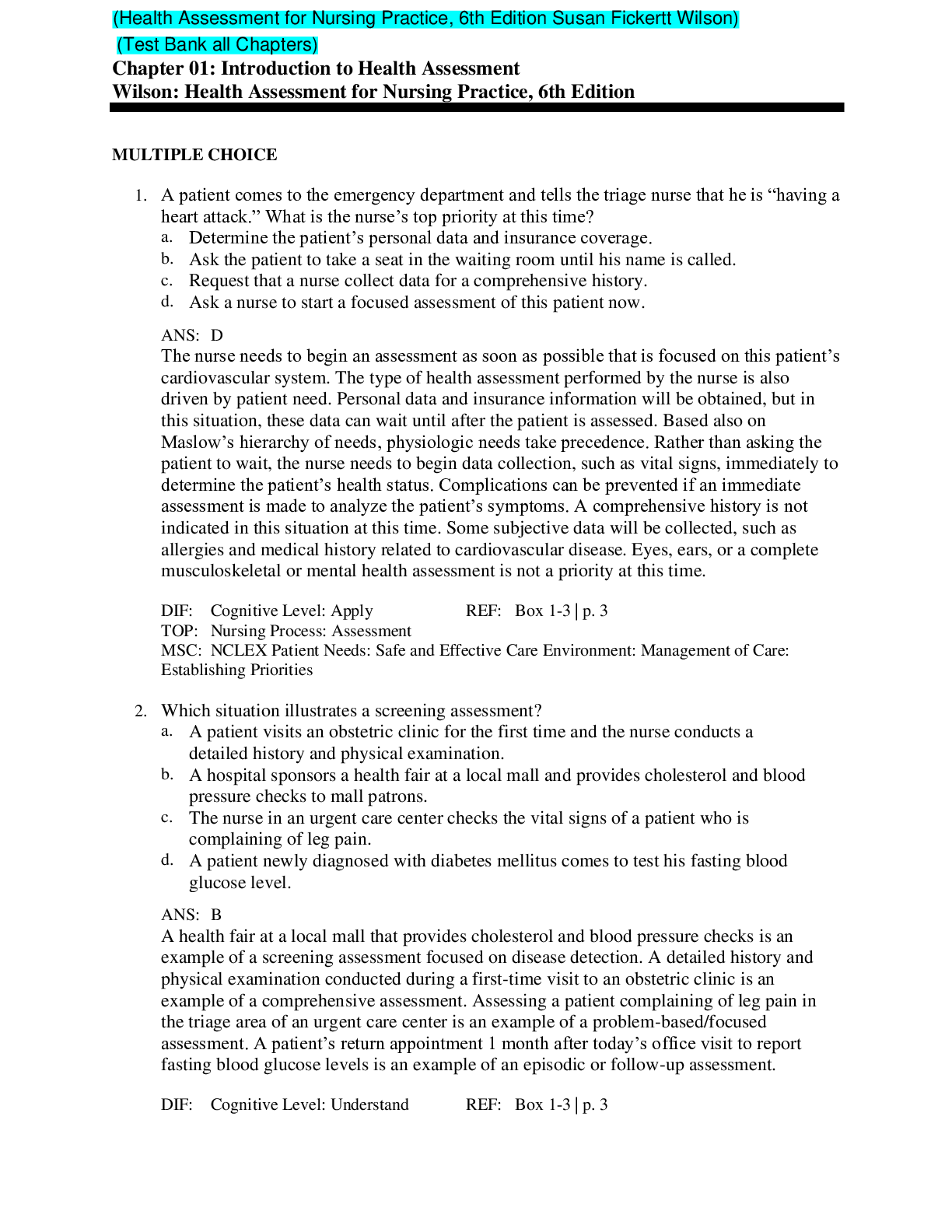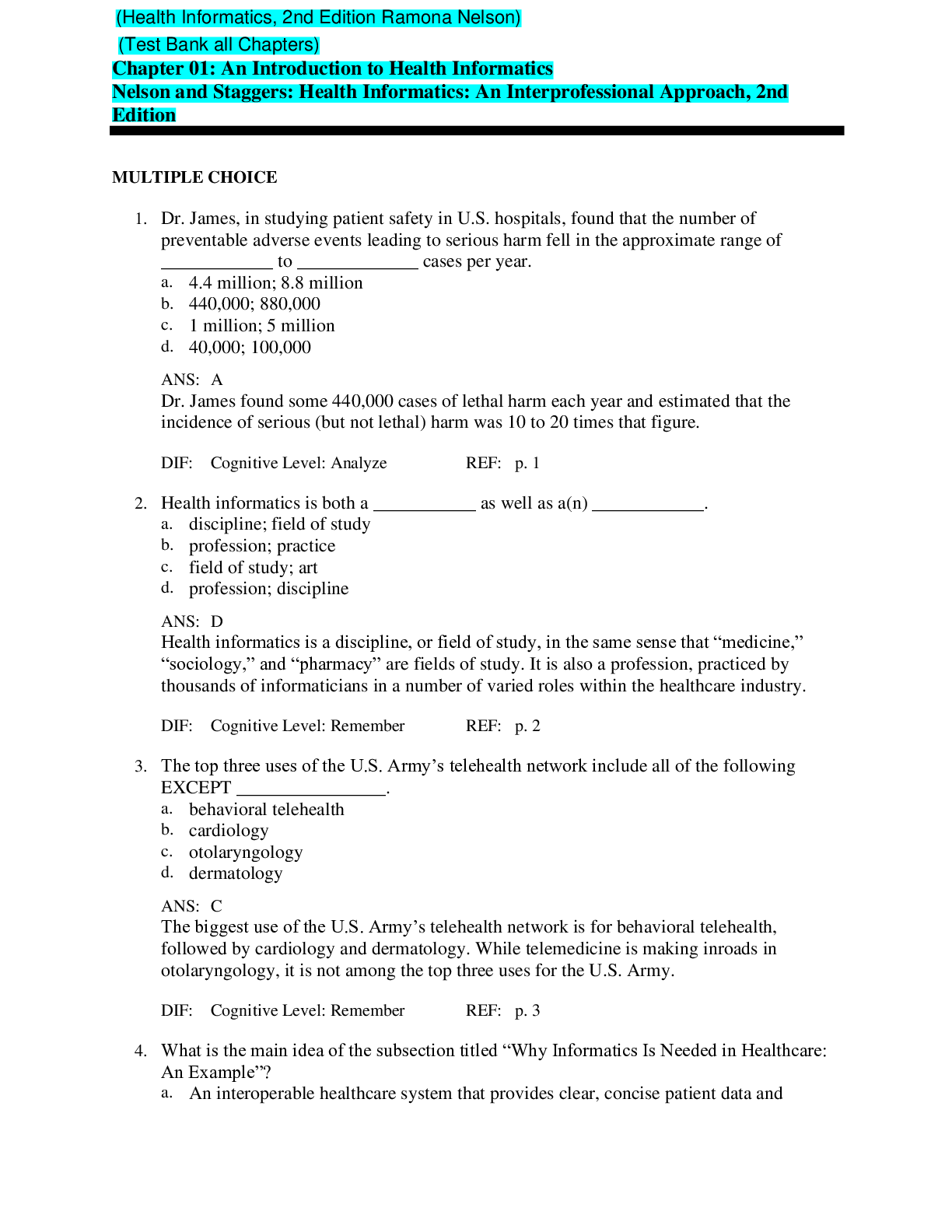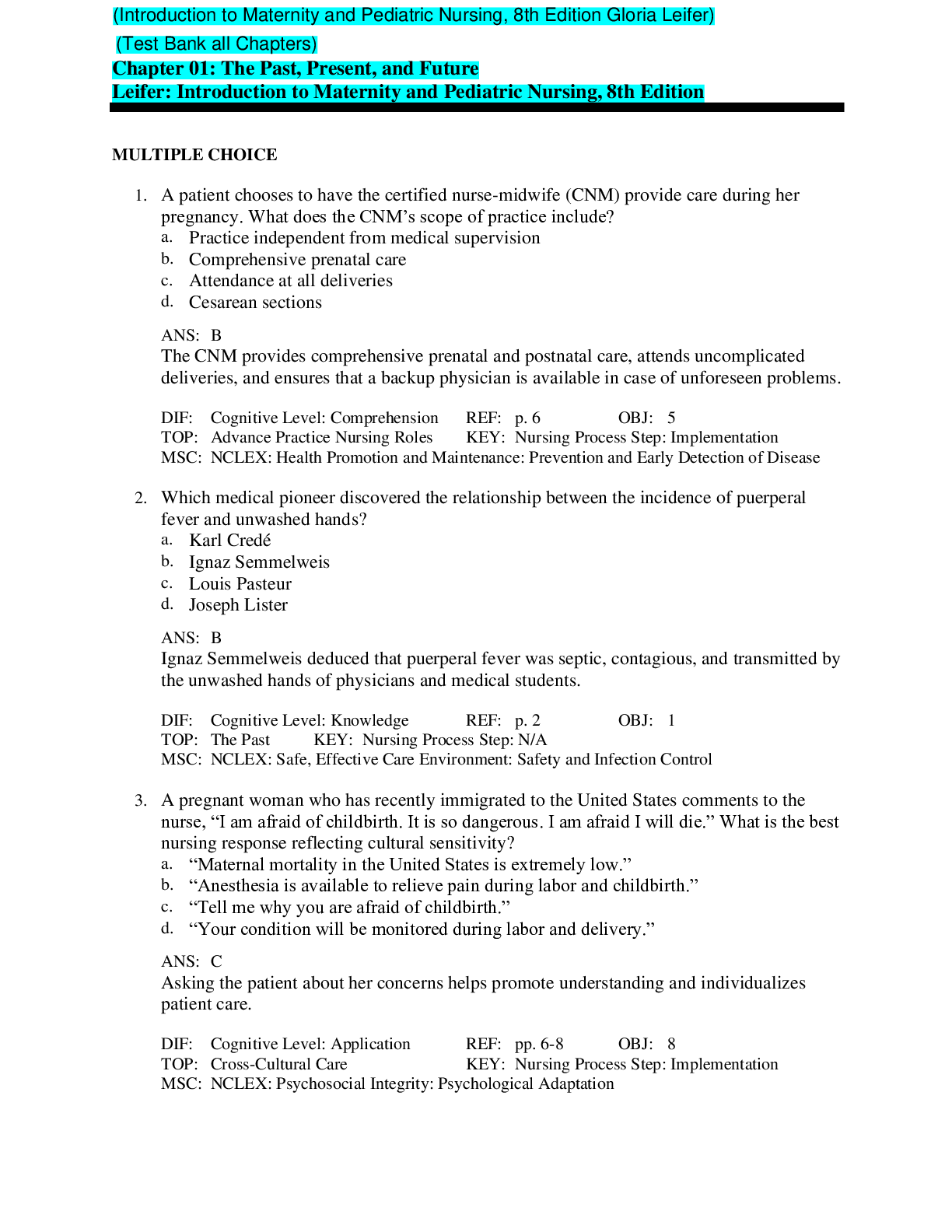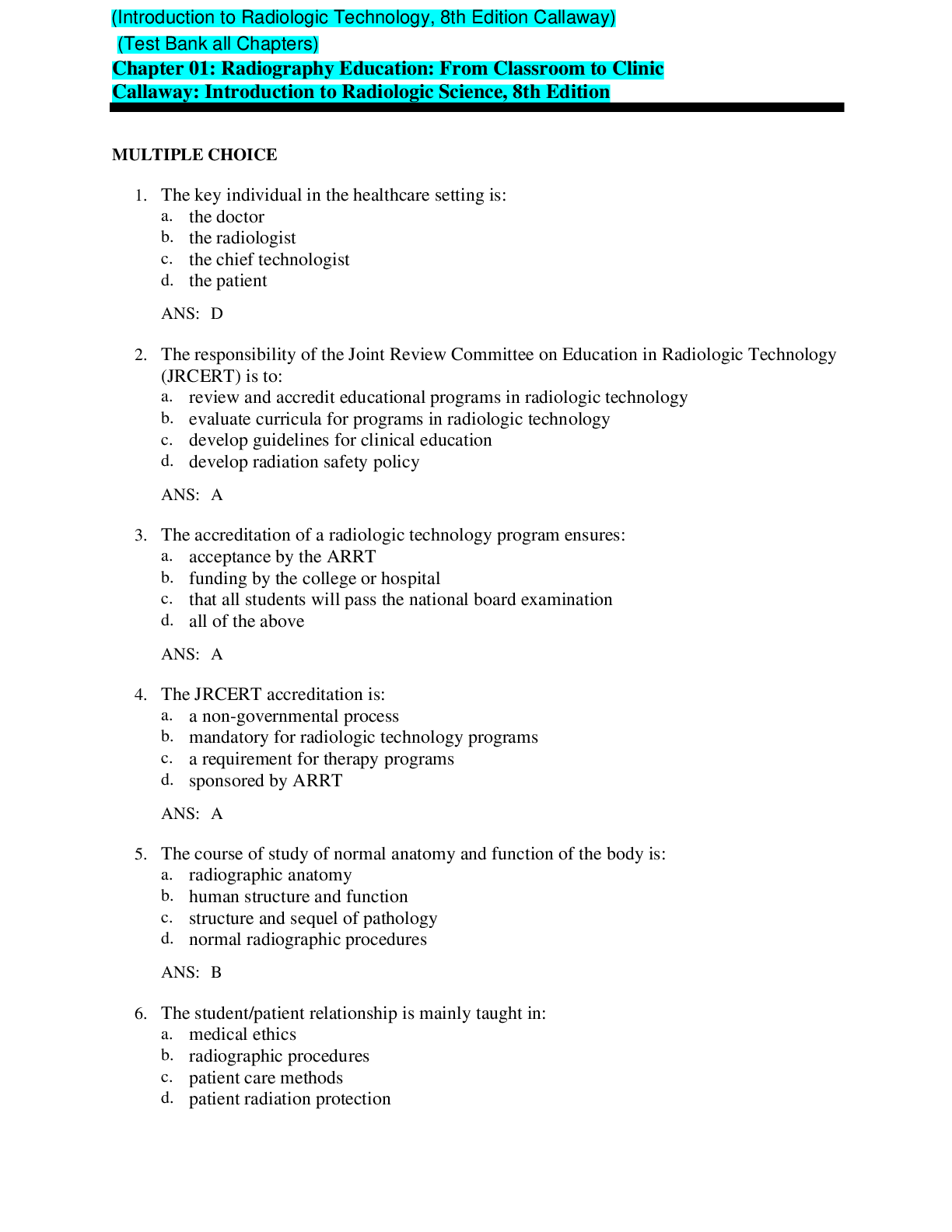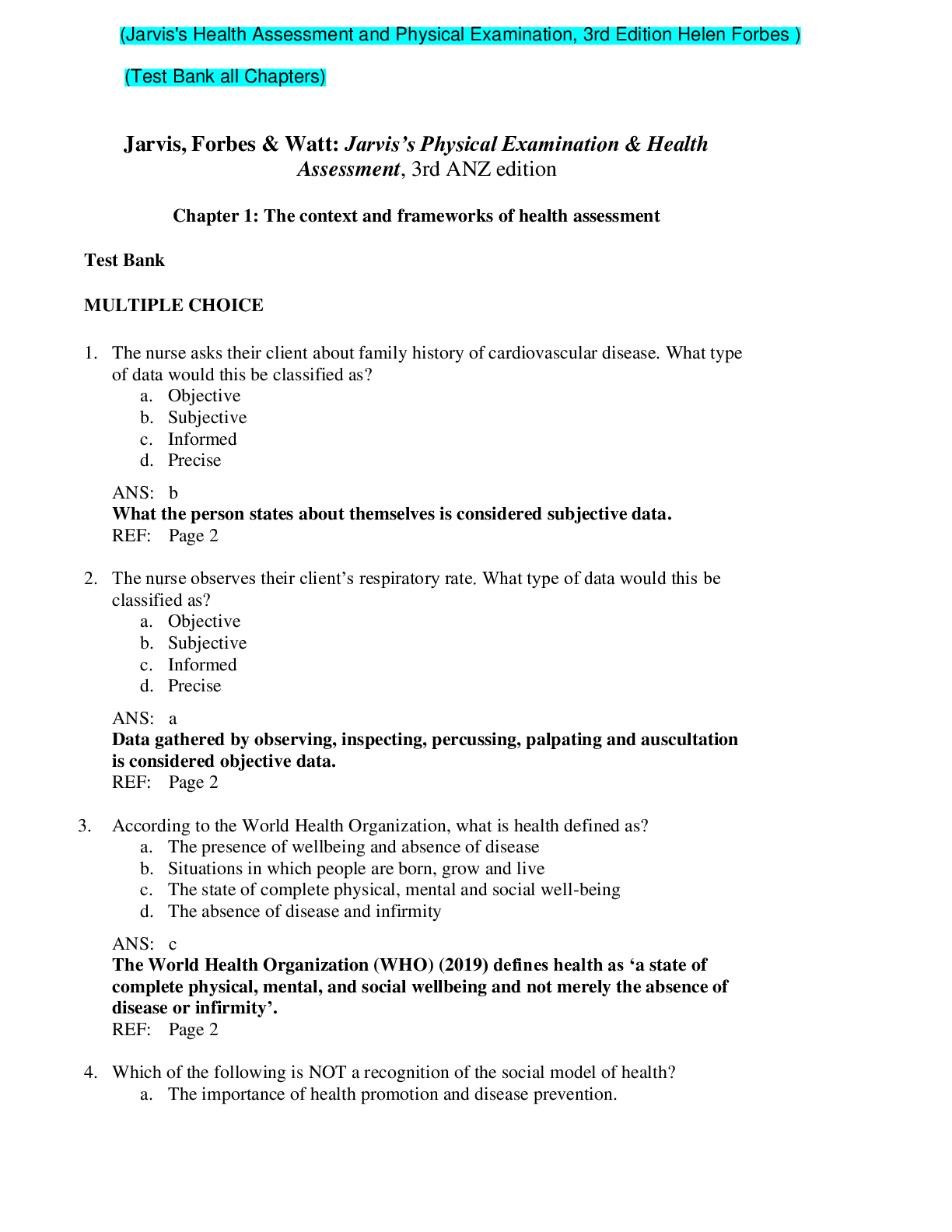Medical surgical nursing 7th TESTBANK COMPLETE
Document Content and Description Below
Chapter 1: Introduction to Medical-Surgical Nursing Chapter 1: Introduction to Medical-Surgical Nursing Test Bank MULTIPLE CHOICE 1. Which action demonstrates that the nurse understands the purpos... e of the Rapid Response Team? a. Monitoring the client for changes in postoperative status such as wound infection b. Documenting all changes observed in the client and maintaining a postoperative flow sheet c. Notifying the physician of the client’s change in blood pressure from 140 to 88 mm Hg systolic d. Notifying the physician of the client’s increase in restlessness after medication change ANS: C The Rapid Response Team (RRT) saves lives and decreases the risk for harm by providing care to clients before a respiratory or cardiac arrest occurs. Although the RRT does not replace the Code Team, which responds to client arrests, it intervenes rapidly for those who are beginning to decline clinically. It would be appropriate for the RRT to intervene when the client has experienced a 52- point drop in blood pressure. Monitoring the client’s postoperative status, maintaining a postoperative flow sheet, and notifying the physician of a change in the client’s status after a medication change would not be considered activities of the Rapid Response Team. DIF: Cognitive Level: Comprehension/Understanding REF: pp. 2-3 TOP: Client Needs Category: Safe and Effective Care Environment (Management of Care—Collaboration with Interdisciplinary Team) MSC: Integrated Process: Nursing Process (Assessment)2. The Joint Commission focuses on safety in health care. Which action by the nurse reflects The Joint Commission’s main objective? a. Performing range-of-motion exercises on the client three times each day b. Ensuring that the client is eating 100% of the meals served to him or her c. Assessing the client’s respirations when administering opioids d. Delegating to the nursing assistant to give the client a complete bath daily ANS: C It is important for the nurse to assess respirations of the client when administering opioids because of the possibility of respiratory depression. The other interventions may or may not be necessary in the care of the client and do not focus on safety. DIF: Cognitive Level: Application/Applying or higher REF: N/A TOP: Client Needs Category: Safe and Effective Care Environment (Safety and Infection Control) MSC: Integrated Process: Nursing Process (Assessment) 3. Which action by the nurse shows an understanding of the principle of self-determination? a. Allowing a postoperative client to decide to take medication with fruit juice rather than water b. Allowing a teenager to decide not to go to a clinic when there is evidence that she is having profuse vaginal bleeding c. Allowing a parent to decide not to proceed with a lifesaving operation for a 12-year-old clientd. Allowing an older client with dementia to decide not to take cardiac medication throughout the shift ANS: A Respect for people is one of three basic ethical principles that nurses and other health care professionals should use as a basis for clinical decision making. Respect implies that clients are treated as autonomous individuals capable of making informed decisions about their care. This client autonomy is referred to as self-determination, or self-management, and is best illustrated by allowing a client to decide to take medication with fruit juice rather than water. The other answer choices would not illustrate self-determination appropriately and might possibly endanger the client’s life. DIF: Cognitive Level: Application/Applying or higher REF: N/A TOP: Client Needs Category: Safe and Effective Care Environment (Management of Care—Ethical Practice) MSC: Integrated Process: Nursing Process (Assessment) 4. The nurse is initiating a series of teaching sessions with an older client. What is the nurse’s highest-priority, client-centered action before beginning the session? a. Ensure that the client’s family is present and will participate. b. Make certain that the client is wearing his glasses. c. Have printed handouts ready to use during the session. d. Schedule the session for early evening after the client’s meal. ANS: B The most important client-centered action is to ensure that the client is wearing his or her glasses. The ability to see adequately will outweigh the need for family presence, use of printed handouts, and hunger (or lack thereof). DIF: Cognitive Level: Application/Applying or higher REF: N/A TOP: Client Needs Category: Health Promotion and Maintenance (Principles of Teaching/Learning)MSC: Integrated Process: Teaching/Learning 5. Which action best demonstrates the nurse using client-centered care when planning a menu for a Vietnamese client who is newly diagnosed with diabetes? a. Asking the client what food he or she would eat on a standard diabetic menu b. Asking family members to make selections for the client from a diabetic menu c. Ordering a typical diabetic meal for the client and planning diet teaching d. Researching the Vietnamese culture before discussing diabetic meal planning ANS: D Client-centered care is best illustrated by the nurse researching Vietnamese culture and native cooking before discussing meal planning. This shows that the nurse is interested and is involved in the client’s care. The nurse can then suggest foods from the standard diabetic menu to the client and his or her family. DIF: Cognitive Level: Application/Applying or higher REF: N/A TOP: Client Needs Category: Physiological Integrity (Basic Care and Comfort—Nutrition and Oral Hydration) MSC: Integrated Process: Teaching/Learning 6. The Institute for Healthcare Improvement (IHI) identified interventions to save client lives. Which actions are within the scope of nursing practice to improve quality of care? a. Insert a central line to give intravenous fluid to a dehydrated client. b. Use sterile technique when changing dressings on a new surgical site.c. Intubate a client whose oxygen saturation is 92%. d. Prescribe aspirin for a client who presents with an acute myocardial infarction ANS: B The only intervention identified within the scope of nursing practice is to use sterile technique. Central line insertion, intubation, and prescription are functions of the physician. DIF: Cognitive Level: Application/Applying or higher REF: N/A TOP: Client Needs Category: Safe and Effective Care Environment (Management of Care—Legal Rights and Responsibilities) MSC: Integrated Process: Nursing Process (Implementation) 7. Which action by the nurse demonstrates the best practice for nursing documentation on a computerized record? a. Deleting all documentation errors on the computerized record b. Using red font to denote all significant events that have occurred c. Waiting until the end of the shift to record a summary of information d. Documenting assessment data at the point of care ANS: D The best practice for nursing documentation is to document as soon as the assessment is completed. The other practices listed are ineffective and are not recommended. DIF: Cognitive Level: Application/Applying or higher REF: N/A TOP: Client Needs Category: Safe and Effective Care Environment (Management of Care—Legal Rights and Responsibilities)MSC: Integrated Process: Communication and Documentation 8. A client is scheduled for a mastectomy. As she is about to receive the preoperative medication, she tells the nurse that she does not want to have her breast removed but wants a lumpectomy. Which response indicates that the nurse is acting as a client advocate? a. Telling the client her surgeon is excellent and knows what is best for her condition b. Calling the surgeon to come and explain all treatment options to the client c. Holding the client’s hand and offering to pray with her for a good outcome d. Arranging for a postoperative visit from a cancer survivor ANS: B Clients have the right to be fully informed about their treatment plans and to change their minds. A client who expresses doubt, uncertainty, or a change of feeling about a treatment plan should be supported by the nurse and heard by the health care provider, and should serve as an active participant in treatment planning. The nurse would be functioning best as a client advocate by notifying the surgeon that the client wants a different treatment option. The nurse would not be acting as a client advocate by providing vague reassurance, arranging for a cancer survivor to come meet with the client, or offering to pray with the client because none of these options would address the client’s desire for a different treatment option. Calling the surgeon to come and explain all treatment options also promotes communication and client advocacy. DIF: Cognitive Level: Application/Applying or higher REF: N/A TOP: Client Needs Category: Safe and Effective Care Environment (Management of Care—Ethical Practice) MSC: Integrated Process: Caring 9. What priority assessment data should be shared with the interdisciplinary team from a client admitted to the emergency department with a lacerated artery? a. Information regarding next of kin to notify in case the client diesb. History about what medications the client is currently taking c. Measurement of blood pressure and pulse d. Assessment of rate and depth of respirations ANS: C In establishing an emergency database, assessment first focuses on the immediate problem, especially with a high probability for a life-threatening consequence. Assessing vital signs such as blood pressure and pulse, which indicate the client’s hemodynamic status, is the priority intervention. Determining the client’s current medications, notifying next of kin, or measuring the rate and depth of respirations is of less importance at this time. DIF: Cognitive Level: Application/Applying or higher REF: N/A TOP: Client Needs Category: Physiological Integrity (Physiological Adaptation—Medical Emergencies) MSC: Integrated Process: Nursing Process (Assessment) 10. Which intervention can the client expect to receive from a medical-surgical nurse in an ambulatory care setting? a. Drawing blood for routine or preoperative testing b. Teaching the client how to change a dressing on an incision c. Obtaining the client’s signature on a surgical consent form d. Performing a comprehensive physical examination ANS: B Client teaching is a primary role of the medical-surgical nurse. Obtaining a surgical consent is usually the responsibility of the person performing the surgery. Blood drawing and performing physicals may be done by the nurse but are not primary nursing responsibilities.DIF: Cognitive Level: Application/Applying or higher REF: N/A TOP: Client Needs Category: Safe and Effective Care Environment (Management of Care—Continuity of Care) MSC: Integrated Process: Nursing Process (Planning) 11. An emergency department (ED) nurse gives report on a client who is being transferred to the medical-surgical floor. Because of an identified risk for suicide, the ED nurse suggests that the floor nurse contact a sitter and behavioral health. This statement represents which part of the SBAR hand-off? a. Situation b. Background c. Assessment d. Recommendation ANS: D The ED nurse is giving recommendations to the medical-surgical floor nurse about interventions to start for the client who is being transferred. No communication is provided in the SBAR report about the situation, background, or assessment. DIF: Cognitive Level: Knowledge/Remembering REF: p. 4 TOP: Client Needs Category: Safe and Effective Care Environment (Management of Care—Continuity of Care) MSC: Integrated Process: Communication and Documentation 12. The nurse is present when the physician discusses the potential effects of a chemotherapy regimen for a client with cancer. Weighing the benefits of the chemotherapy against possible side effects is an example of which ethical principle? a. Paternalism b. Beneficencec. Justice d. Autonomy ANS: B Beneficence stresses the importance of preventing harm and promoting the client’s well-being. When benefits versus negative effects of an intervention are compared, the client is better informed and can evaluate what could be done in his or her best interest. Autonomy implies selfdetermination, justice refers to equality, and paternalism refers to the male head of the family for decision making. DIF: Cognitive Level: Comprehension/Understanding REF: p. 4 TOP: Client Needs Category: Safe and Effective Care Environment (Management of Care—Ethical Practice) MSC: Integrated Process: Caring 13. The physician prescribes warfarin (Coumadin) 15 mg daily. The nurse notes that this is three times the normal dose for this client based on the client’s medication profile and laboratory work. What does the nurse do first? a. Give the dose and document the concern. b. Call the pharmacy for a consultation. c. Call the physician to question the order. d. Hold the medication for that day. ANS: C Communication between the physician and the nurse should be the first step in medication administration to ensure safety in client care. The pharmacy can be consulted but not as the first step. The other answers are not safe practices for the nurse. DIF: Cognitive Level: Application/Applying or higher REF: N/ATOP: Client Needs Category: Safe and Effective Care Environment (Safety and Infection Control—Error Prevention) MSC: Integrated Process: Communication and Documentation; Nursing Process (Evaluation) 14. Which statement best describes the process of nursing case management? a. The coordination of care services to at-risk populations b. A collaborative process to promote quality and cost-effective care c. The implementation of care to acutely ill, underserved populations d. A cost-effective care delivery model meeting the needs of specially defined groups ANS: B The process of case management involves collaboration to assess, plan, implement, coordinate, monitor, and evaluate services to meet health care needs in a manner that promotes quality and cost-effective outcomes. It does not solely involve coordination of care services to at-risk populations, implementation of care to acutely ill and underserved clientele, nor a cost-effective model of care delivery that will meet the needs of specially defined groups. DIF: Cognitive Level: Comprehension/Understanding REF: p. 4 TOP: Client Needs Category: Safe and Effective Care Environment (Management of Care—Continuity of Care) MSC: Integrated Process: Nursing Process (Planning) 15. Which client is best served by a case manager? [Show More]
Last updated: 11 months ago
Preview 1 out of 1570 pages
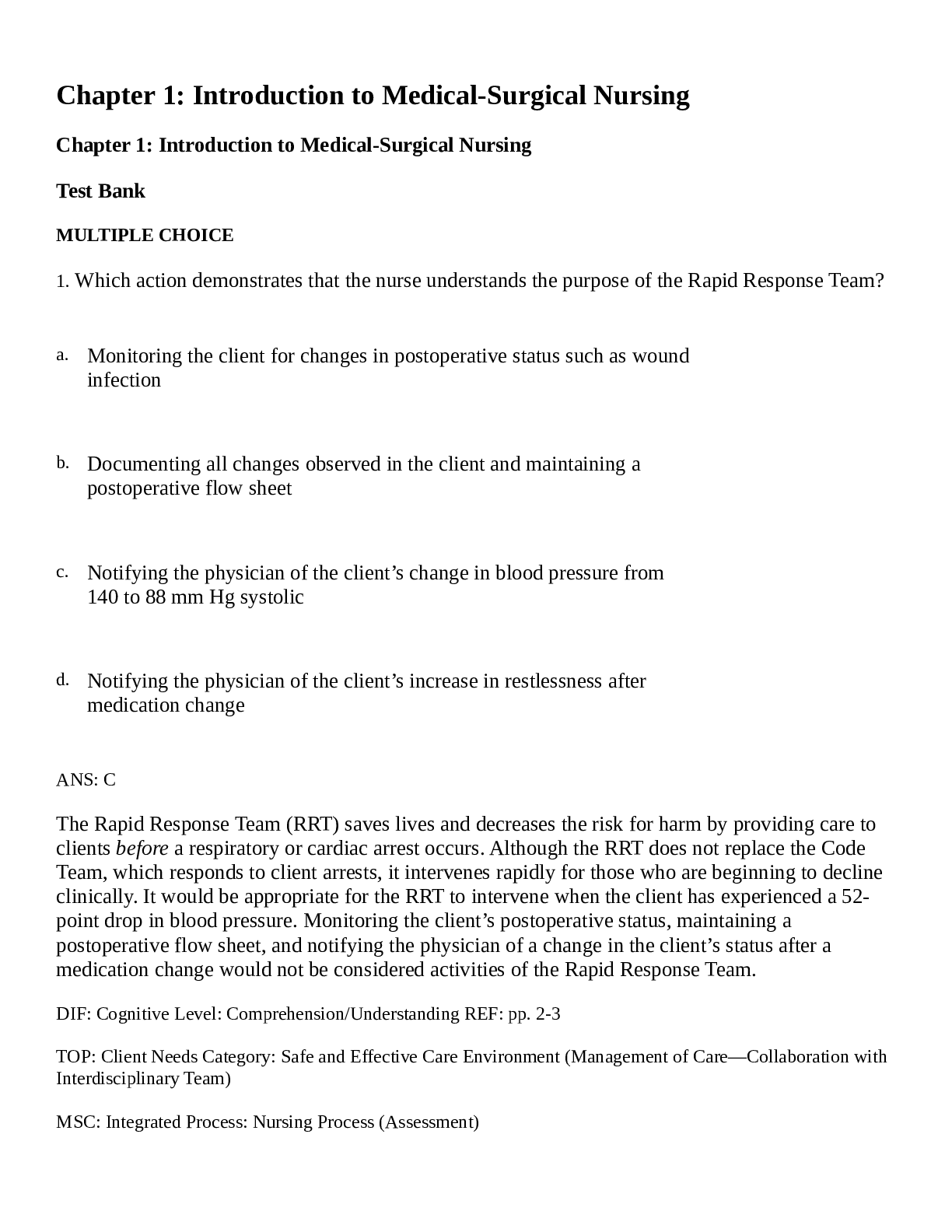
Reviews( 0 )
Document information
Connected school, study & course
About the document
Uploaded On
Sep 12, 2021
Number of pages
1570
Written in
Additional information
This document has been written for:
Uploaded
Sep 12, 2021
Downloads
0
Views
50


.png)

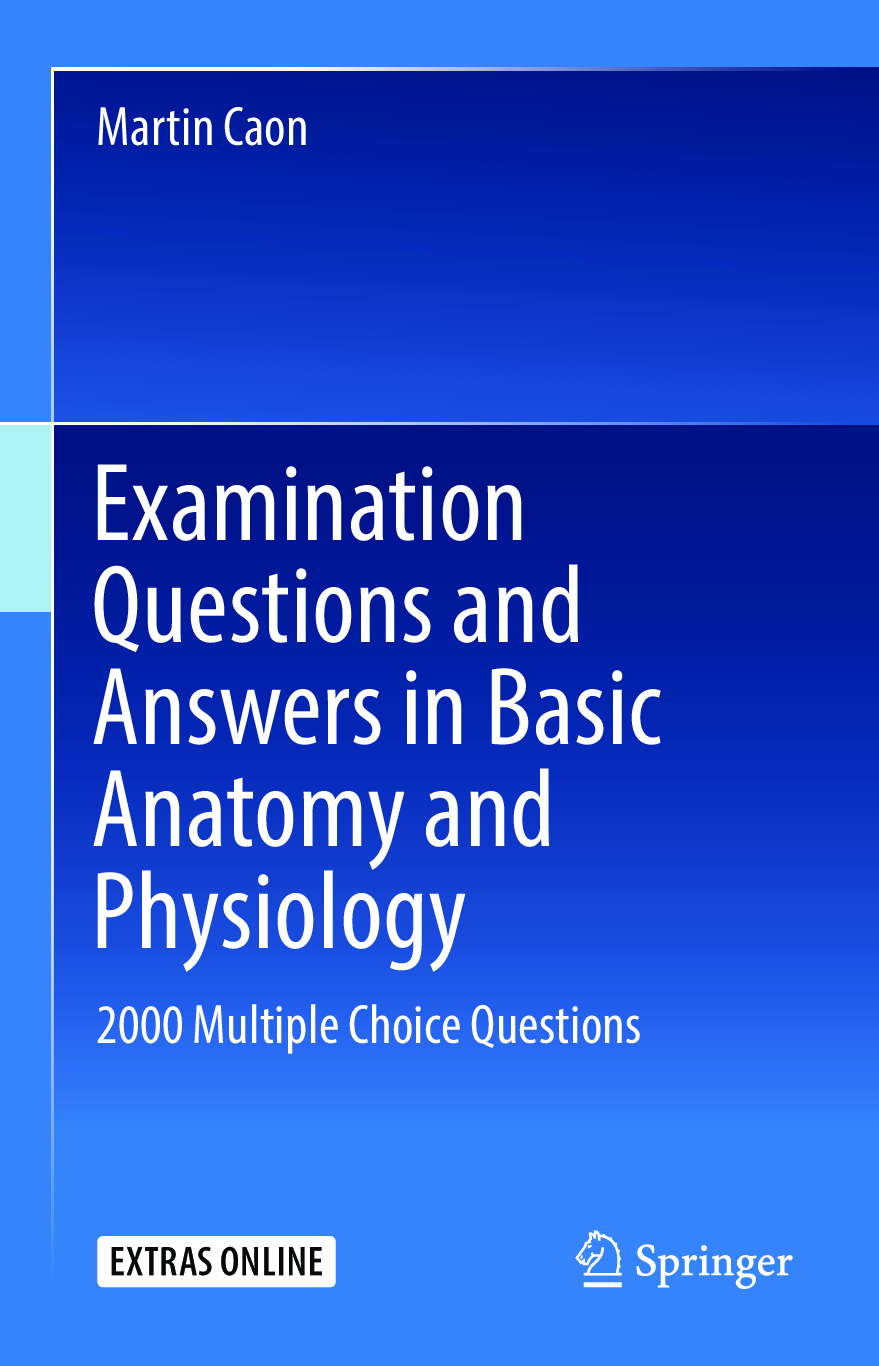
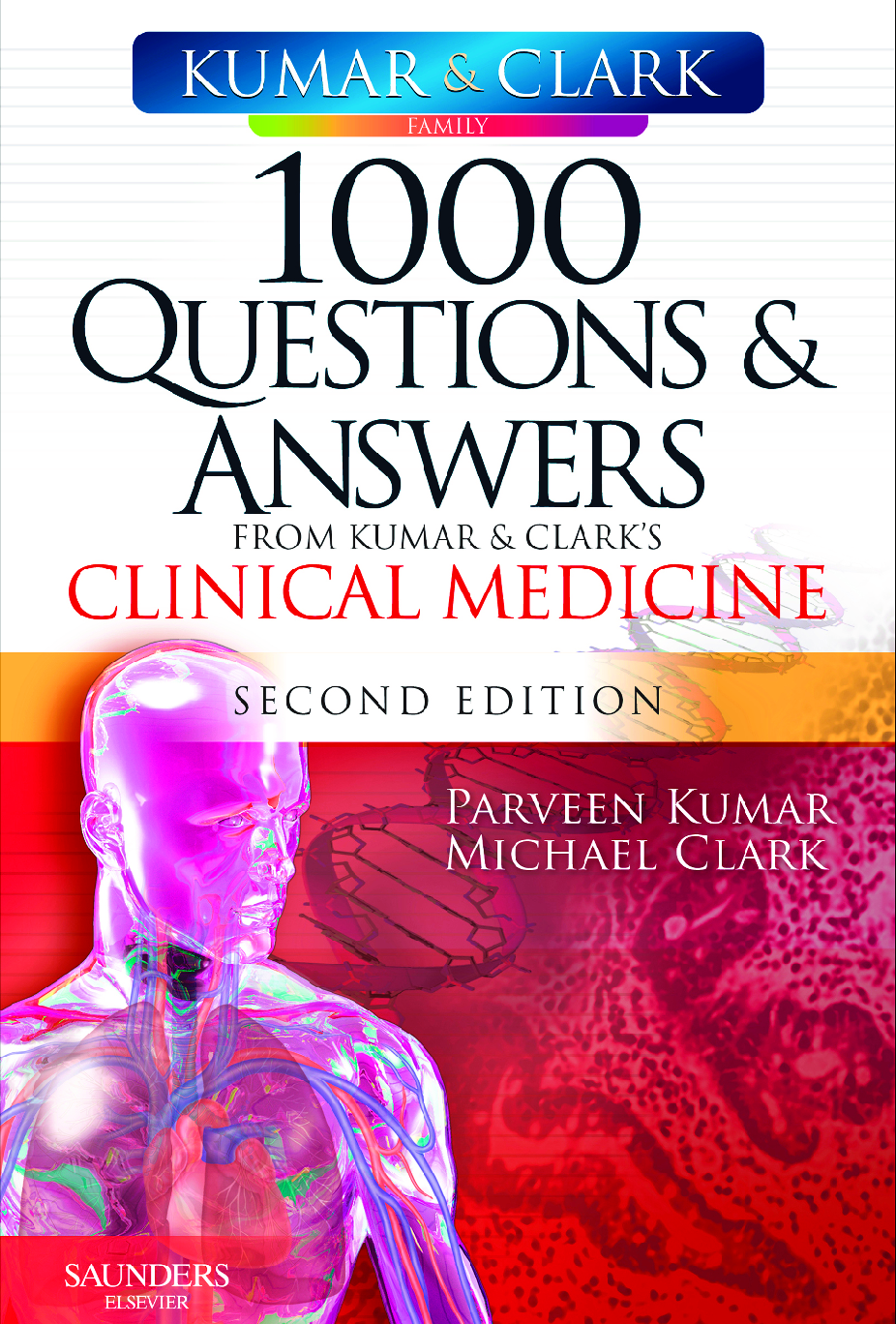
.png)
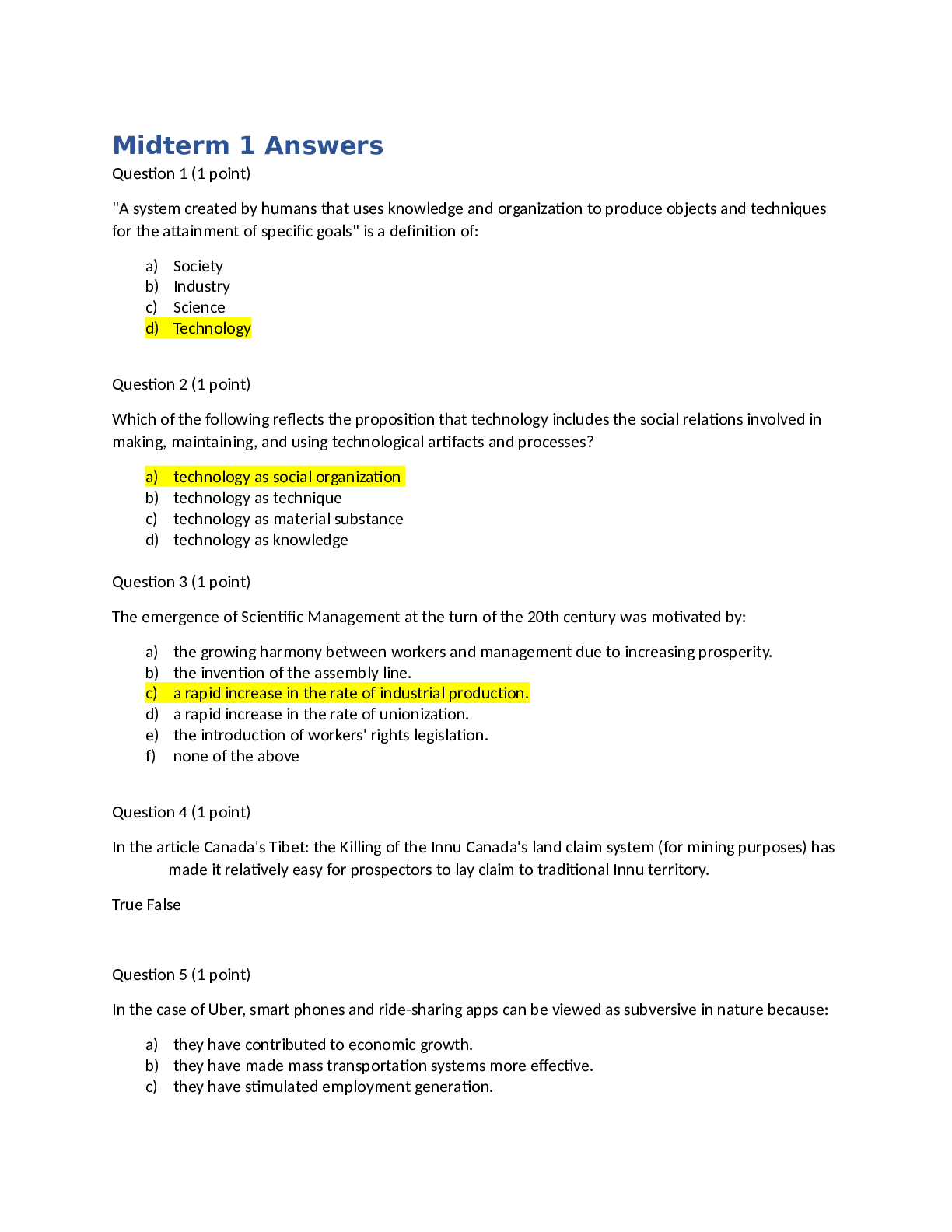


 David L.png)
.png)
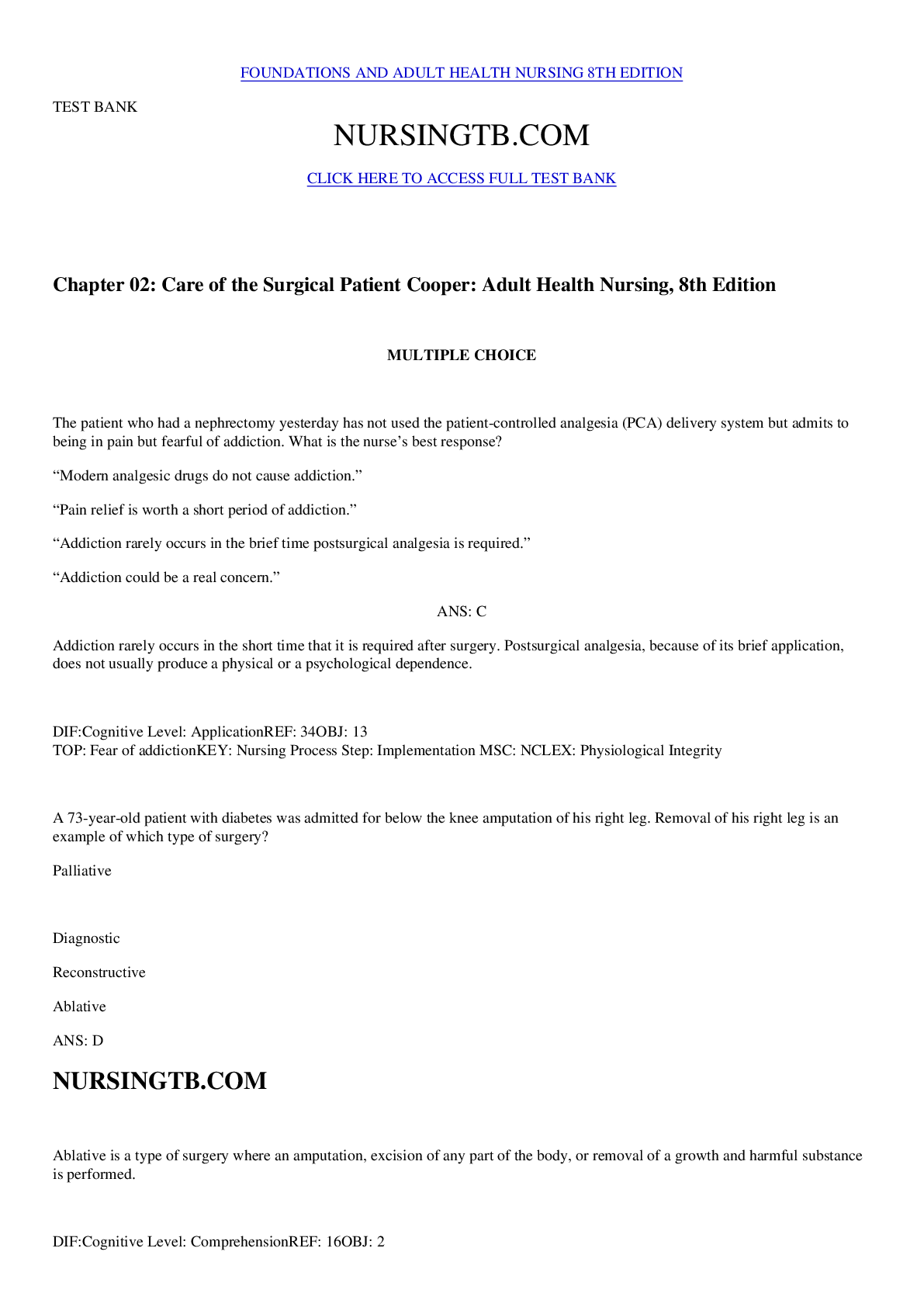
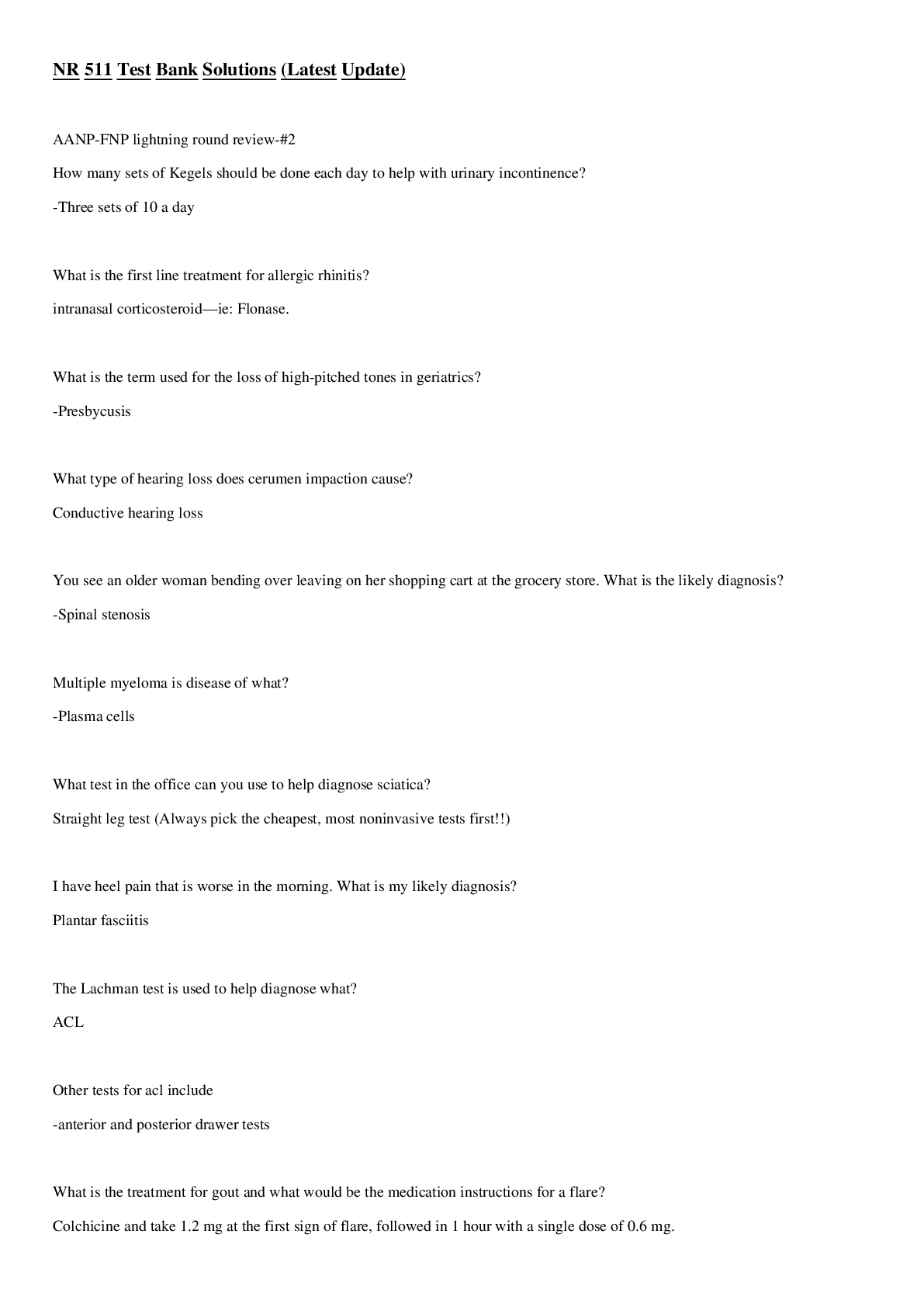




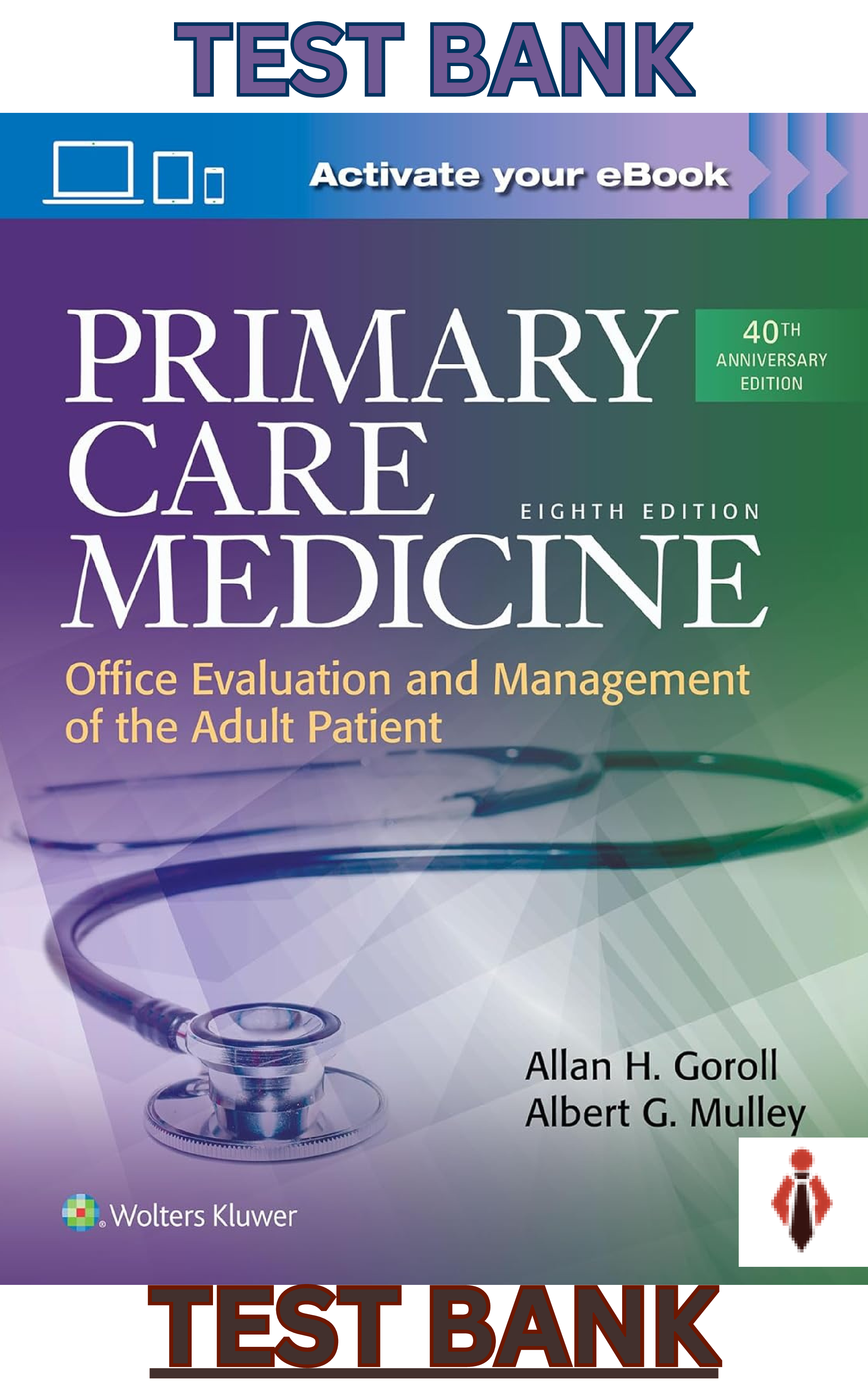

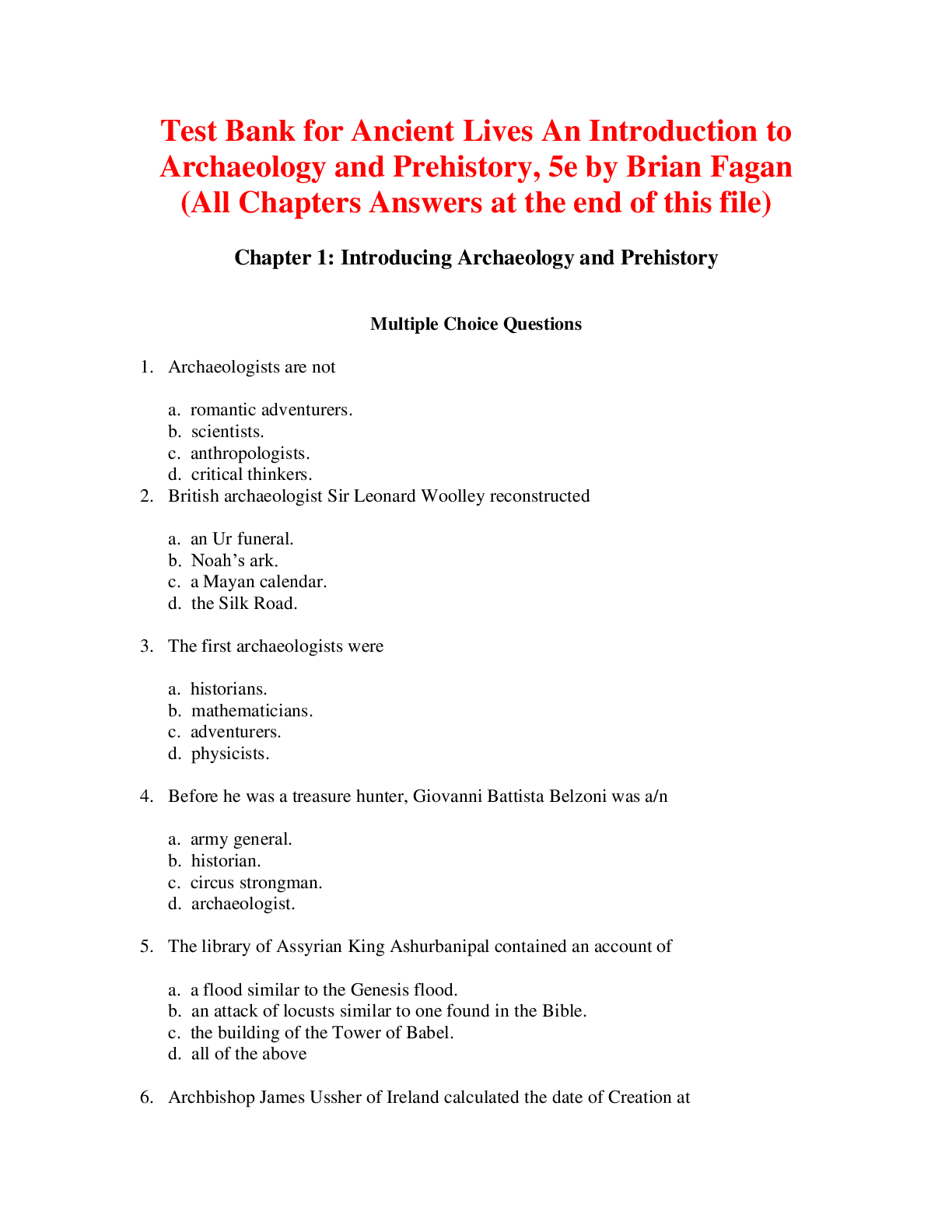
.png)

